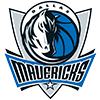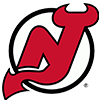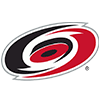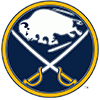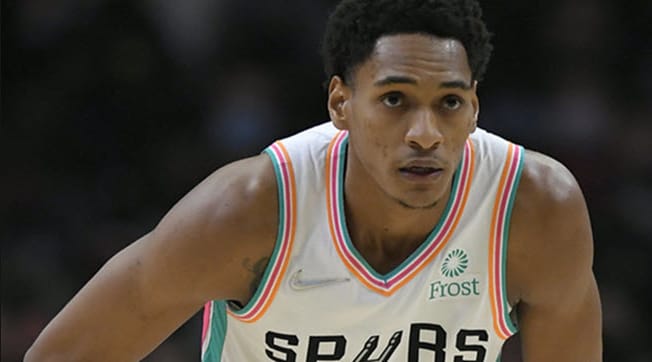 STATE OF THE FRANCHISE
STATE OF THE FRANCHISE
The Hawks were one of the few teams in the Eastern Conference that didn't undergo major personnel changes this offseason. The relative peace of the roster and the return of a healthy Al Horford should be to the franchise's benefit. Unfortunately, the team is undergoing turmoil in the front office as owner Bruce Levenson is going to sell the team, and general manager Danny Ferry is under indefinite suspension after each of their racially charged comments came to light. The question isn't whether the problems will affect the team but how much. The Hawks appeared to be on an upswing as they took the Pacers to seven games in the first round of the playoffs last season. With coach Mike Budenholzer entering his second season with the team, the Hawks could be a solid squad if a new owner can be found quickly and Ferry's situation dealt with without much distraction.
PLAYING TIME DISTRIBUTION
Looking at Atlanta's depth chart, it's an odd mix of unique pieces. The team was a pleasant 16-13 last season before Horford went down for the season with a torn pectoral muscle. Their star is entering his eighth season (all with Atlanta), and he might have to take a slightly reduced allotment of minutes as he recovers. Of course, Horford missed all but 11 games in 2011-12 and played 37 minutes in 74 games in 2012-13, so there's a track record to suggest Horford's minutes won't be capped. Paul Millsap and DeMarre Carroll (both former Jazz players) will start at the forward spots. Each player should command at least 30 minutes. The starting backcourt of Jeff Teague and Kyle Korver is also fairly well set. Knowing that Budenholzer is from the San Antonio tree means that he may give his starters some rest in favor of a deeper rotation. Pero Antic and rookie Adrian Payne will support the frontcourt, and both have range to stretch opposing defenses. Former Thunder wing Thabo Sefolosha can give the team a defensive boost. Shelvin Mack will back up Teague, and this could be the year that John Jenkins finds the range that made him so deadly in college.
PLAYER OUTLOOKS
Centers
Al Horford: Horford is one of the NBA's top bigs when healthy. Unfortunately, he hasn't been healthy much in recent seasons. A completely torn pectoral muscle ended Horford's 2013-14 season in late December, limiting the All-Star to just 29 games played. A similar injury cost him all but 11 games of the 2011-12 season, but between those two injury-ravaged years, Horford put together his best all-around performance as a pro, averaging 17.4 points, 10.2 boards, and 3.2 assists while shooting 54 percent from the field. It seems fair to ask whether the Hawks are taking an unnecessary risk with Horford by lining him up at center almost exclusively. At 6-9 and 245 pounds, Horford is undersized for the position. For years, there have been rumors that Horford would prefer to line up at power forward, but with Paul Millsap established at power forward and the equally-undersized Pero Antic as the only other nominal center on the roster, it appears the Hawks will roll the dice with Horford at the five most of the time. Another, less-serious concern is Horford's free-throw shooting. His percentage from the line peaked at just shy of 80 percent in 2010-11 but dropped to 64 percent in his career year of 2012-13, and it was under 70 percent again when the injury ended his 2013-14 campaign. Horford has been cleared to begin shooting and is expected to be ready to participate fully in training camp, but he didn't play for his native Dominican Republic in this year's FIBA World Cup this summer.
Pero Antic: A veteran of European ball playing his first year in the NBA at age 30, Antic supplied much-needed bulk and toughness to Atlanta's frontcourt, taking on a much more significant role after Al Horford was lost for the season due to a torn pectoral. Unfortunately, Antic suffered a number of injuries of his own – including a stress fracture to his ankle that sidelined him for the entire month of February – limiting him to 50 games and 26 starts. He finished the year with averages of 7.0 points, 4.2 rebounds, 1.2 assists, and 0.2 blocks in 19 minutes per game. Ideally, Antic would be deployed as a stretch power forward, as he was a respectable shooter in his first NBA campaign, hitting over 40 percent from the field (33 percent from three) and canning 1.1 three-pointers per game. The Hawks opted to bring him back for a second season, but his role will be reduced significantly with Horford healthy.
Elton Brand: Brand spent the majority of the offseason in free-agency limbo before re-signing with the Hawks in September. He helped the Hawks stay relevant last season after Al Horford went down for the season with a torn pectoral, but Brand was more of a stopgap than a savior. He played in 73 games last season. Brand started 15 games, averaging 28 minutes per game as a starter, and he came off the bench in the 58 other contests he played in, averaging 17 mpg off the bench. With Horford healthy and several other options in the Hawks frontcout this season, Brand might not get many minutes. When Horford was healthy last season, Brand was struggling to carve out more than 10-13 minutes in the rotation most nights. If that's his fate while Horford is playing, Brand is only going to be an option in very deep leagues this season.
Mike Muscala: The Hawks planned to have Muscala – their second-round pick in the 2013 draft – play in Europe for a year or two, but frontcourt injuries forced them to accelerate Muscala's apprenticeship. Atlanta negotiated a buyout with his Spanish club and added him to the roster in early March. He appeared in 20 games down the stretch, averaging 11 minutes per game – mostly at center – with 3.8 points, 2.6 rebounds, and 0.5 blocks per contest. He apparently impressed the Hawks enough to win a role in the frontcourt this season, as Atlanta let Gustavo Ayon walk in free agency. At 6-11, Muscala is the tallest of the Hawks' center options. His biggest strength entering the league was his rebounding, but he's shown signs that he can be an efficient contributor on the offensive end. He averaged 13.8 points on 43-percent shooting in six games during the Las Vegas Summer League.
Forwards
Paul Millsap: The Hawks signed Millsap to a two-year, $19 million contract before last season, a deal that looks like one of the NBA's biggest bargains. Millsap and Al Horford seemed to be establishing themselves as one of the league's top frontcourt pairings. After Horford was lost for the season, Millsap stepped up with a career year that earned him a spot on the All-Star team. Millsap probably should have been named to Team USA's roster for the FIBA World Cup as well. As the Hawks' primary frontcourt scorer for most of the season, Millsap posted career-bests in scoring (17.9), assists (3.1), and three-pointers (1.0) while contributing 8.5 boards and 1.1 blocks per game. The increased usage and perimeter shooting hurt his efficiency just a touch, as his field goal percentage dipped to a career low (but still solid) 46 percent. That said, Millsap's ability to step out and hit from the perimeter is one of the reasons he's able to share the floor with Horford. There is a downside to that pairing, though. Like Horford, Millsap is somewhat undersized for his position (6-7, 243) and actually lined up at small forward pretty regularly as a member of the Utah Jazz. The Millsap/Horford combo is one of the league's smallest, which could make the Hawks vulnerable against teams with size. Millsap will be a free agent after this season and will likely be one of the most sought-after free agents of next summer.
DeMarre Carroll: Carroll's first season in Atlanta was easily the best of his five-year NBA career. The journeyman forward quickly established himself as a starter for coach Mike Budenholzer and posted career-best numbers in games played (73), minutes (32), points (11.1), rebounds (5.5), assists (1.8), three-pointers made (1.3), and shooting (47 percent from the field). Carroll came into the season known primarily as a lock-down defender, so the scoring was a particularly nice surprise for a team missing its best player for much of the season. He may be hard-pressed to match those numbers this season, as the Hawks are much deeper on the wing after adding Thabo Sefolosha and Kent Bazemore to the mix over the summer.
Mike Scott: Pressed into service when Atlanta's frontcourt was decimated by injury, second-year pro Mike Scott became one of the Hawks more reliable options off the bench, appearing in 80 of 82 games and averaging 9.6 points in 19 minutes per game. A newfound three-point shot was a big factor in his success. Scott attempted just one three-pointer as a rookie and did not connect. In his second year, he attempted 2.5 three-pointers per game and hit them at a 31-percent clip. Scott was rewarded after the season with a three-year, $10 million contract to remain with the Hawks, but he'll be hard-pressed to replicate last season's success. The return of Al Horford and the addition of rookie Adreian Payne should make the Hawks frontcourt much deeper this year, which could push Scott down to third on the power forward depth chart.
Adreian Payne: Atlanta selected Michigan State forward Adreian Payne with the 15th-overall pick in the 2014 NBA Draft. Payne projects as a stretch power forward in the pros. He has good size (6-9, 215 lbs) and a nice touch from outside (42 percent on three-pointers in college). Payne had a decent run in the Las Vegas Summer League, averaging 12.5 points and 7.0 boards through six games, but wasn't particularly efficient (38% from the field, 30% from three, 3.5 turnovers per game). As a rookie, he'll likely be buried behind Paul Millsap and Pero Antic on the depth chart. Payne's true opportunity could come if Millsap leaves as a free agent after this season.
Guards
Jeff Teague: You might look at Teague's career-best scoring average from last season (16.5 ppg) and assume that the fifth-year point guard had a productive season under new coach Mike Budenholzer, but Teague's averages don't tell the whole story. He struggled to take on the responsibility of running his new coach's San Antonio Spurs-style offense and was wildly inconsistent for much of the season. So much so that, according to a number of reports, Teague was actively being shopped in trades at midseason. But things seemed to click for Teague toward the end of the year, and in the Hawks' first-round playoff loss to the Pacers, he was outstanding (19.3 points, 5.0 assists, 3.7 boards in 35 minute per game against Indiana). Atlanta management is hoping he'll build on that performance and become a more consistent player this season. They'd surely trade a drop in his averages for fewer "peaks and valleys" in his game. With Al Horford back at full strength and a deeper roster, Teague shouldn't need to score quite as much this season for the Hawks to be successful.
Kyle Korver: Korver re-established himself as one of the league's top three-point threats last season. Not that there was any real doubt about his abilities. He shot a staggering 47 percent from distance in 2013-14, just a hair off his career shooting percentage of 48, while hitting 2.6 three-pointers per game. In the process, he established a new NBA record by hitting at least one three-pointer in 127 consecutive games, but he's not a one-dimensional chucker. Korver also contributed four rebounds, one steal, and a career-high 2.9 assists per game, while shooting his usual otherworldly 93 percent from the free-throw line. A free agent this summer, Korver opted to re-up with the Hawks for four more seasons and is likely to return to his starting role, but don't be surprised if Korver's minutes – and by extension, his overall numbers - dip a bit. His 34 minutes per game last season established a new career high for his playing time, but this year's Hawks are a lot deeper on the wing than last year's model. New additions like Kent Bazemore and Thabo Sefolosha will give coach Mike Budenholzer the option to rest Korver a bit more this season.
Shelvin Mack: Mack plays the "steady veteran backup" role in Atlanta's backcourt. It's sort of remarkable, considering the fact that Mack is just 24 years old and has played for four teams in his first three seasons as a pro, but he earned that distinction by stepping up for an injury-depleted Hawks team last season. As primary backup to Jeff Teague, Mack set new career bests in games played (73), minutes (20.4), points (7.5), boards (2.2), assists (3.7), steals (0.7), and was very steady from the free-throw line (87 percent). That performance moved him off the "much-traveled journeyman" career path and earned him a three-year contract to stay in Atlanta. He'll begin the season pretty firmly established as the second man on the point guard depth chart.
Thabo Sefolosha: One of the league's better perimeter defenders, Sefolosha will be locking up opponents for the Atlanta Hawks this year. Atlanta acquired the veteran stopper via a sign-and-trade deal with Oklahoma City. He'll make $12 million as a Hawk over the next three seasons. A player like Sefolosha – a defensive stopper who contributes next to nothing on the offensive end – is a tough fit on most teams, but with Jeff Teague, Kyle Korver, Al Horford, and Paul Millsap in the mix, the Hawks should have more than enough firepower to cover for Sefolosha's limitations. His defensive ability will give Mike Budenholzer a lot of matchup options. Budenholzer could use Korver and DeMarre Carroll as an offense/defense wing pairing with the first unit and then swap in the combination of Sefolosha and Kent Bazemore to keep up the pressure on both ends of the floor. Sefolosha's well-documented defensive ability hasn't really translated into fantasy relevance. He typically averages more than a steal per game (1.1 per game for his career), but is not a shot blocker (0.3 per game last season), and doesn't contribute much in any other category.
Kent Bazemore: The deadline deal that sent Bazemore from the Warriors to the Lakers last season did wonders for his career. The second-year wing – an undrafted free agent out of Old Dominion – couldn't crack the Warriors' rotation, but thrust into a significant role on an injury-depleted Lakers team, Bazemore thrived. He averaged just 6.1 minutes in 44 games for the Warriors. However, as a Laker, he played 28 minutes per game in 23 games, scoring 13.1 points per game with 1.4 made three-pointers, more than three assists, and over a steal per game. After the season, he signed a two-year deal with the Hawks worth a reported $4 million. Of course, Atlanta is a much deeper team than the 2013-14 Lakers. Bazemore will be competing with the likes of Kyle Korver, Thabo Sefolosha, and DeMarre Carroll for minutes at shooting guard and small forward. Also worth noting is that coach Mike Budenholzer's system isn't nearly as fantasy-friendly as Mike D'Antoni's, which further diminishes Bazemore's fantasy stock.
Dennis Schroder: The 17th-overall pick in the 2013 NBA Draft, German point guard Dennis Schroeder has shown flashes of real talent in his NBA career to date, but he's still just 20 years old and very much a project at this point. In a perfect world for ex-Spurs assistant Mike Budenholzer, Schroeder would develop into a Tony Parker-style drive-and-dish point guard, who's best off breaking down opposing defenses with his dribble and quickness and setting up teammates for easy baskets. While he's shown flashes of that potential, especially in summer league play, Schroeder has been far too turnover-prone to this point. He averaged 3.4 turnovers per 36 minutes as a rookie and an ugly 4.5 turnovers through six games in Vegas this summer. Right now, it seems Schroeder will spend much of the season as Atlanta's third point guard, well behind starter Jeff Teague and backup Shelvin Mack on the depth chart.
John Jenkins: The 23rd-overall pick in the 2012 NBA Draft, John Jenkins has the reputation of an excellent three-point shooter – and a suspect defender, but hrough his first two seasons as a pro, the ex-Vanderbilt Commodore has yet to establish himself as a rotation player in pros. Jenkins made 61 appearances as a rookie and posted averages of 6.1 points and 0.9 made three-pointers in 15 minutes per game. His sophomore numbers were even less impressive – 3.1 points in 12 minutes per game – before a back injury ended his season prematurely. He still hasn't fully recovered. Jenkins played for Atlanta in the Las Vegas Summer League but was limited to under 15 minutes per game. It seems clear that the Hawks don't anticipate Jenkins playing a big role this season, as they acquired free agents Kent Bazemore and Thabo Seflolosha to provide depth on the wing behind Kyle Korver and DeMarre Carroll.
SLEEPER
Shelvin Mack: Since he left Butler three years ago, Mack bounced around the league a lot, but he's found a home in Atlanta. Unlike starter Jeff Teague, Mack is more willing to play a limited role, and he displayed his well-rounded skills in his first season as a Hawk. Mack can provide staunch defense and facilitates the offense well. It wouldn't be a huge surprise if he stole a few more minutes from Teague this season to make the Atlanta point guard situation into something of a platoon.
BUST
Jeff Teague: As noted above, Teague put up career-high numbers in 2013-14 but was still inconsistent. While his scoring improved, his assist rate fell from the season before. With Horford back, Teague will need to be more of a facilitator than a score-first point guard, and it's anyone's guess whether he can adapt to the slightly different role. If he can't, he could cede time to the steadier, but less spectacular Shelvin Mack.







